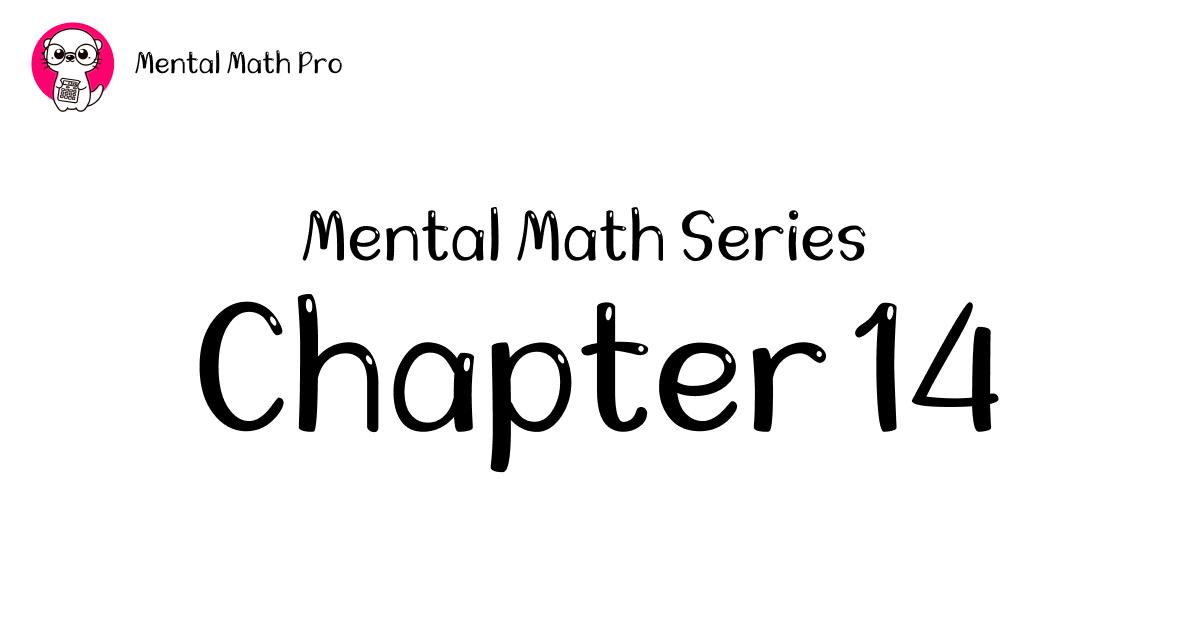Trachtenberg Method for Beginners: 3 Tips to Get Started
7 min read · Aug 12, 2024

Table of contents
Hi there!
Welcome to the fourteenth (and final) chapter in my mental math series 🥲
Last time, we talked about the Trachtenberg Method from a general point of view.
In this chapter, we'll see how you can get started by discussing the Trachtenberg Method for beginners.
Introduction
I already mentioned how the Trachtenberg Method, cooked up by a guy named Jakow Trachtenberg, isn't your run-of-the-mill math trick.
But how does it work?
At its core, it breaks down big calculations into bite-sized pieces that your brain can easily chew on. It's all about simple rules and operations.
One of the key ideas is using "neighbors" in calculations. A number's neighbor is just the digit right next to it. This little concept is a big player in many of the method's techniques.
Getting Started with the Trachtenberg Method
Embarking on your journey to master the Trachtenberg Method requires a strategic approach.
Here are some tips to get you started:
Start Small and Practice Regularly
Here's the secret sauce: consistency. You've got to practice this stuff every single day. Don't try to be a hero right out of the gate. Start with the easy stuff - Here, try multiplying 123 x 11 using the Trachtenberg method.
Once you've got that down, then you can move on to the bigger fish.
Set aside some time every day to practice. I'm not talking hours here - even 15–20 minutes will do the trick. The key is to do it every day.
Use Mnemonics and Memory Aids
Mnemonics (which is a word I can't pronounce in real life) are little memory tricks that'll help you remember the rules.
For example, when you're multiplying by 11, think of the numbers as people holding hands. Sounds silly, right? But I guarantee it'll help you remember the "neighbor" concept.
Come up with your own shortcuts too. Maybe you want to make up a little rhyme, or picture something in your head. Whatever works for you. The more personal you make these memory aids, the better they'll stick in your brain.
Apply Techniques to Real-Life Situations
Here's where the rubber meets the road. You've got to use this stuff in real life. Next time you're at a restaurant, use the Trachtenberg method to calculate the tip. When you're shopping, use it to figure out discounts. Heading out on a road trip? Use it to estimate your travel time.
1. Trachtenberg Method Addition
Listen up, because I'm about to blow your mind with a whole new way of adding numbers. It's called the "Rule of 11," and it's the secret sauce of the Trachtenberg Method's addition technique.
Rule of 11
Here's the deal: In this method, we never let our totals go above 11. If they do, we immediately knock 11 off. Why? Because it keeps the numbers small and manageable. Trust me, your brain will thank you for this.
Here's how you do it:
- Line up all your numbers nice and neat, with the same number of digits. If a number's too short, slap some zeros in front of it.
- Add the digits column by column, starting from the right.
- If your sum in any column goes over 11, subtract 11 and carry 1 to the next column.
Step-by-step Process
Let's walk through this together. We're going to add 93, 472, 65, and 3551 using this method:
-
First, line 'em up: 0093 0472 0065 3551
-
Now, we add column by column, using our Rule of 11:
- Ones column: 3 + 2 + 5 + 1 = 11. Subtract 11, write down 0, carry 1.
- Tens column: 9 + 7 + 6 + 5 + 1 (that we carried) = 28. Subtract 11 twice, write down 6, carry 2.
- Hundreds column: 0 + 4 + 0 + 5 + 2 (carried) = 11. Subtract 11, write down 0, carry 1.
- Thousands column: 0 + 0 + 0 + 3 + 1 (carried) = 4.
-
Now, write down how many times you subtracted 11 in each column: 4000 0060 0021
-
Add these numbers up: 4000 0060 0021 4181
There you have it! 93 + 472 + 65 + 3551 = 4181.
Common Mistakes in Addition
Here are some traps people fall into when they're learning this method:
- They forget to use the Rule of 11. Always check if your column sum is over 11 and subtract if it is.
- They mess up the carry-overs. Keep a close eye on those carried values, especially when you're subtracting 11 multiple times.
- They don't line up the numbers right. Make sure all your numbers are lined up properly, with zeros in front where needed.
To avoid these pitfalls, practice, practice, practice. Make the Rule of 11 second nature. Double-check your work by doing a quick estimate in your head. And until you're a pro at this, use the old-school addition method to check your answers.
2. Trachtenberg Method Multiplication
Let's explore the key multiplication techniques:
General Multiplication Rules
-
First trick: Adding zeros. When you're multiplying by a two-digit number, slap two zeros in front of the number you're multiplying. Three-digit number? Three zeros. You get the idea.
-
Multiplying by 11:
- Start with the rightmost digit.
- Add each digit to its left-hand neighbor.
- For the leftmost digit, just write it down.
- Multiplying by 12:
- Double each digit.
- Add the result to its right-hand neighbor.
Two-finger Technique for Efficient Calculations
Now, here's where multiplication gets interesting. The two-finger technique:
- Use one finger to point at digits in the first number.
- Use another finger to point at digits in the second number.
- The "outer pair" is the rightmost digits of each number.
- The "inner pair" is the digit to the left of the outer pair in each number.
Let's try it out. We'll multiply 61 by 32:
- Write it as 0061 * 32 (remember those leading zeros).
- Start with the outer pair: 1 * 2 = 2
- Move to the inner pair: 6 * 2 + 1 * 3 = 15
- Keep going left.
Specialized Methods for Small Numbers
For numbers 2–12, we've got some special tricks:
- For 2: Double each digit, carry when you need to.
- For 3: Triple each digit, carry when you need to.
- For 4: Double the double of each digit.
- For 5: Half the double and add a zero (like this: 5 * 6 = 30, half of 12 is 6, so 6 * 5 = 30).
Example Multiplication Problem
Let's multiply 972 by 18:
- Add two zeros to 972: 00972 * 18
- Start from the right:
- Outer pair: 2 * 8 = 16, write down 6, carry 1
- Inner pair: 7 * 8 + 2 * 1 = 58, add carried 1: 59, write down 9, carry 5
- Keep going with this pattern
- Final result: 17,496
Common Mistakes in Multiplication
Here are some traps people fall into:
- They mix up rules for different multipliers. Practice each multiplier separately before you start combining them.
- They mess up carrying digits in their head. Find a way to keep track of those carried digits that works for you. Some people imagine them floating above the number.
To get good at this, you've got to practice. Use different numbers. Make flashcards (if you'd like me to build a tool to help with this the same way I built the mental math practice tool, let me know!). Start easy and work your way up to the hard stuff.
3. Trachtenberg Method Division
This is all about partial dividends and something called NT (Number-Tens) products. Stick with me, and you'll be dividing like a pro in no time.
Understanding Partial Dividends
In this method, we start with the big numbers on the left. We call this working with partial dividends.
A partial dividend is just a fancy way of saying "the smallest chunk of numbers on the left that's bigger than what you're dividing by." For example, if you're dividing 9471 by 77, your first partial dividend is 94. Why? Because it's the smallest number on the left that's bigger than 77.
Step-by-step Process
Here's how you do it:
- Find your first partial dividend.
- Divide this by the tens digit of your divisor.
- Calculate the NT product: multiply your answer by the whole divisor.
- Subtract the NT product from your partial dividend.
- Bring down the next digit to make a new partial dividend.
- Rinse and repeat until you've used all the digits.
Example Division Problem
Let's try it out. We'll divide 9471 by 77:
- First partial dividend: 94 (it's the smallest chunk bigger than 77)
- 94 ÷ 7 = 1 (7 is the tens digit of 77)
- NT product: 1 × 77 = 77 (N = 7, T = 7)
- 94–77 = 17
- Bring down 7: New partial dividend is 177
- 177 ÷ 7 = 2
- NT product: 2 × 77 = 154
- 177–154 = 23
- Bring down 1: New partial dividend is 231
- 231 ÷ 7 = 3
- NT product: 3 × 77 = 231
- 231–231 = 0
And there you have it. 9471 ÷ 77 = 123 with no leftovers.
Common Mistakes in Division
Here's where people usually mess up:
- They get confused about partial dividends. Remember, it's the smallest chunk on the left that's bigger than what you're dividing by.
- They screw up the subtraction. Double-check your work, especially when you're borrowing.
- They struggle with divisors that have a '1' in the tens place. Here's a trick: double both numbers. So 15092 ÷ 15 becomes 30184 ÷ 30. Much easier to handle.
If you're having trouble:
- Practice the parts you're weak on. If certain divisors give you trouble, work on those.
- Check your work by estimating the answer before you start calculating.
- For those tricky divisors with '1' in the tens place, practice that doubling trick I just taught you.
Remember, the key to mastering this is practice. Start with the easy stuff and work your way up. Before you know it, you'll be dividing numbers in your head faster than you can say "Trachtenberg!"
Conclusion
We have reached the end of the mental math series!
I truly hope you enjoyed it. If so, please share it with someone you like.
If you didn't enjoy it, please share it with someone you dislike.
I hope to see you in Mental Math Pro 🙂 Be well.
About the author

Richard Reis
Founder of Mental Math Pro! Also currently doing a fun little "25 AI Startups in 50 Weeks" challenge.

